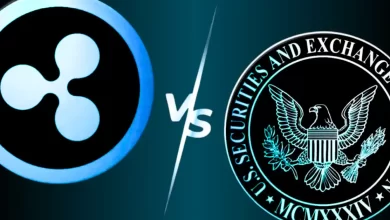Explosive Ripple CTO Predictions: Five Catalysts That Could Shape 2024’s Crypto Landscape

In a recent post on X (formerly Twitter), David Schwartz, Ripple’s Chief Technology Officer (CTO), shared his predictions for the blockchain industry in 2024 and beyond.
Interoperability As Catalysts For DeFi Growth On The XRPL
According to Schwartz, the convergence of artificial intelligence (AI) and blockchain will revolutionize cybersecurity and financial services. AI, according to Schwartz, will play a pivotal role in ensuring blockchain security, empowering accurate market insights and automated trading.
Additionally, AI chatbots, like those on the XRP Ledger (XRPL), will simplify development processes, fostering global innovation and financial inclusion.
Schwartz also anticipates that real-world asset (RWA) tokenization will drive the blockchain economy, with a particular focus on sectors such as real estate and commodities.
Schwartz believes that Tokenized RWAs on the XRP Ledger will enhance collateralized loans, improve interoperability, and attract institutional adoption, reshaping the financial sector.
Furthermore, Schwartz highlights the “revolutionary potential” of decentralized identity (DID) adoption on the blockchain. Schwartz suggests that the integration of DIDs into decentralized exchanges (DEXes) will unlock increased institutional volume, driving growth and liquidity in decentralized finance (DeFi). Schwartz further stated on this matter:
The proposed XLS-40 amendment introduces DID capabilities to XRP Ledger, marking a new era in privacy, security, and financial innovation.
Ripple CTO’s Vision For Blockchain’s Potential
In terms of infrastructure, Schwartz predicts that blockchain interoperability will break down silos, creating a “unified and efficient” ecosystem.
Ripple’s CTO emphasized that interoperability protocols, such as the Cross-Chain bridge amendment for the XRPL, will foster innovation and unlock new DeFi applications.
This shift towards interoperability is expected to drive mainstream adoption, unlocking the potential of blockchain across industries.
Stablecoins also feature prominently in Schwartz’s predictions. Schwartz believes that stablecoins will reshape the global finance landscape, creating new foreign exchange (FX) corridors and reducing dependence on the US dollar.
Stablecoin adoption in the Middle East for regional trades is expected to lead the way. Schwartz stated that financial institutions standardizing integration with blockchains will pave the way for stablecoins to become a “universal tool, streamlining international transactions and unlocking new economic potential.”
Ripple President Stresses Compliance-First Approach
In a separate post, Monica Long, President of Ripple, shares her predictions for the industry. Long emphasizes the importance of “compliance, transparency, integration, and greater usability in driving mainstream adoption and real-world utility.”
Monica Long envisions a compliance-first mindset, where the industry builds compliance tooling in a decentralized environment to ensure user safety and regain trust.
Long also highlights the integration of traditional financial players with crypto-native companies as a significant trend. Long stressed that while blockchain will not replace banks, it can provide “unparalleled utility” for institutions, enabling instant cross-border payments without intermediaries charging exorbitant fees.
Moreover, Long emphasizes the need for greater usability in the crypto industry. Ripple’s President envisions a “revolution” where billions of people can benefit from crypto without the need to become experts in managing assets or navigating decentralized exchanges.
Simplifying and streamlining the user experience is key to achieving mainstream adoption and real-world utility, Long believes.
As 2024 approaches, these predictions from Ripple’s executives provide valuable insights into the future direction of the blockchain industry. The convergence of AI and blockchain, RWA tokenization, decentralized identity adoption, interoperability, and stablecoins are expected to shape the industry’s landscape.
Compliance, integration, and usability will also be critical factors in driving widespread adoption and realizing the true potential of blockchain technology.
Featured image from Shutterstock, chart from TradingView.com





